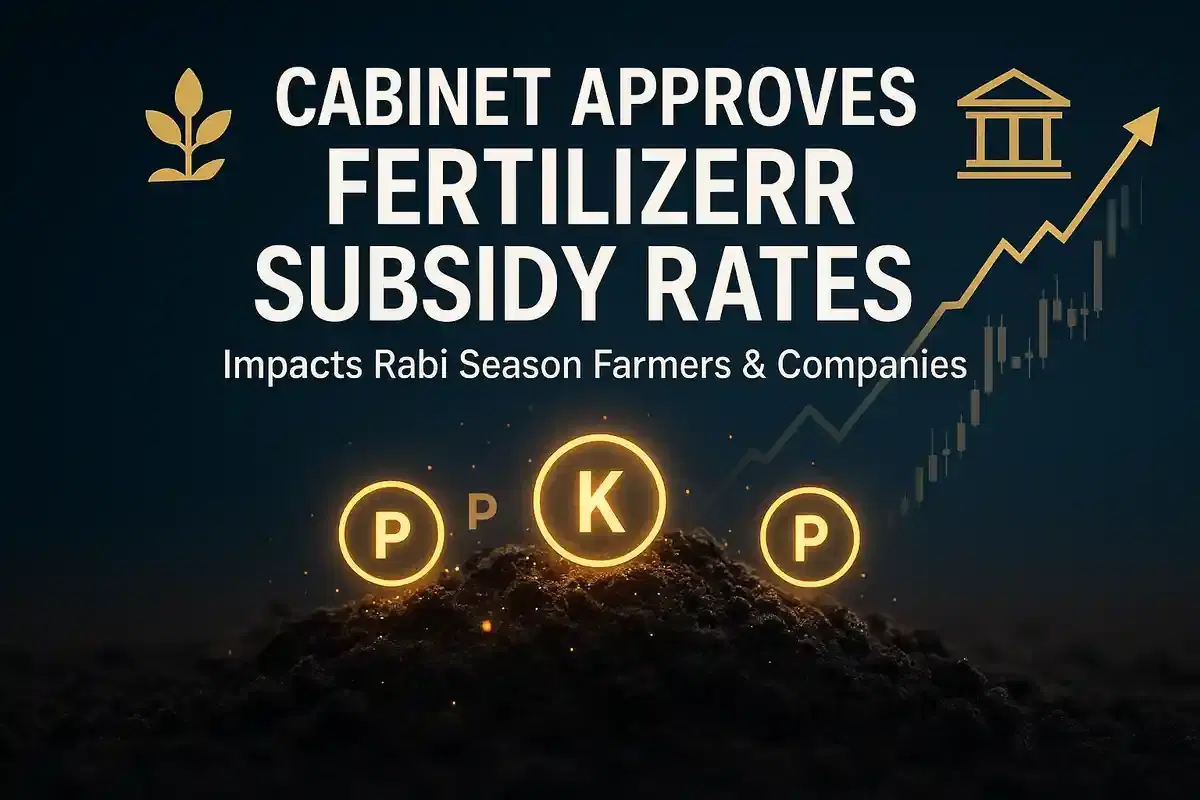Union Cabinet Approves Nutrient-Based Subsidy Rates for Rabi Season Fertilizers
Agriculture
|
28th October 2025, 10:26 AM

▶
Stocks Mentioned :
Short Description :
Detailed Coverage :
The Union Cabinet, led by Prime Minister Narendra Modi, has given its approval for the Nutrient-Based Subsidy (NBS) rates for phosphatic and potassic (P&K) fertilizers. These rates will be applicable for the Rabi season of 2025-26, spanning from October 1, 2025, to March 31, 2026. The primary objective of this decision is to guarantee that vital fertilizers, including Di Ammonium Phosphate (DAP) and various NPKS grades, remain accessible to farmers at subsidized, affordable, and reasonable prices.
The government has estimated a tentative budgetary requirement of ₹37,952.29 crore for this subsidy period. This amount is approximately ₹736 crore higher than the budget allocated for the Kharif season of 2025. The subsidy mechanism ensures that fertilizer companies receive the approved rates, allowing them to supply fertilizers to farmers at fixed affordable prices. The government currently provides 28 grades of P&K fertilizers to farmers at subsidized rates.
This policy is designed to rationalize subsidy expenditures in light of fluctuating international prices of fertilizers and their raw materials, while maintaining the government's commitment to farmer welfare and agricultural stability. The decision is expected to ensure consistent supply and stable pricing for farmers, thereby supporting agricultural output.
Impact This news is significant for the Indian stock market, particularly for companies operating in the fertilizer manufacturing and distribution sector. It provides certainty regarding government subsidy outlays, which directly influences the profitability and sales volumes of these companies. Investors closely watch such policy decisions for potential impacts on agricultural input costs and farmer purchasing power. The stable subsidy regime is crucial for maintaining agricultural productivity and food security in India.
Impact Rating: 7/10
Difficult Terms: * Nutrient-Based Subsidy (NBS): A government scheme that provides subsidies on fertilizers based on the specific nutrients (like Nitrogen, Phosphorus, Potassium, Sulphur) they contain, making them more affordable for farmers. * Rabi Season: One of India's two main agricultural seasons, typically starting in winter (around October) and ending in spring (around March). Crops like wheat, mustard, and peas are grown during this season. * Phosphatic and Potassic (P&K) Fertilisers: These are fertilizers that supply essential plant nutrients, phosphorus and potassium, to the soil. Examples include Di Ammonium Phosphate (DAP) and Muriate of Potash (MOP). * DAP (Di Ammonium Phosphate): A commonly used fertilizer that provides both nitrogen and phosphorus, crucial for plant growth and yield. * NPKS: Refers to fertilizers containing a combination of four key nutrients: Nitrogen (N), Phosphorus (P), Potassium (K), and Sulphur (S). * Union Cabinet: The highest decision-making body of the Indian government for policy matters, chaired by the Prime Minister.